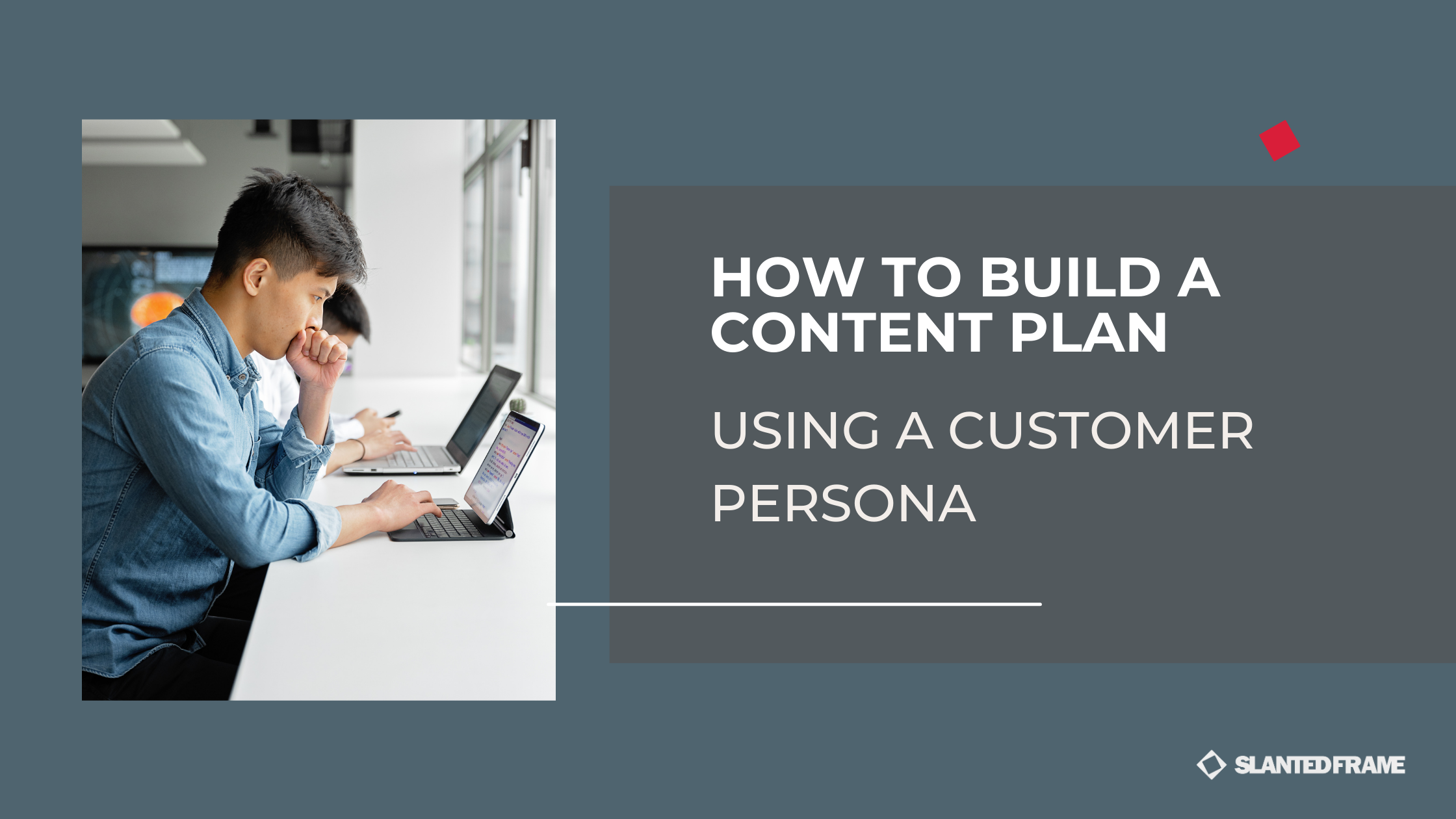Designing your content plan involves a lot of moving parts. A customer persona is among the most important. How you decide to approach your strategy relies quite heavily on your target market and objectives. Tools such as personas are a great way to keep yourself on the right track.
FORMING YOUR CONTENT PLAN
A well-built persona serves as a building block for content strategies in the sense that it focuses the content itself to stay in line with the target audience.
Without a persona, it’s very possible that your content won’t resonate with your ideal customers.
Interestingly enough, 93% of companies who exceed lead and revenue goals segment their database by customer persona.
A solid customer persona helps align all business units and sales teams. Ultimately, the unified attention strengthens your value proposition.

KNOW YOUR CUSTOMERS
Creating a customer persona means knowing your ideal customer inside out, and your content should reflect that. Discovery interviews are a good way to get some foundational knowledge, followed by some deeper insights on the buying process.
EXPANDED CUSTOMER PERSONA DEVELOPMENT
To refine persona development, merge qualitative insights from in-depth interviews with quantitative data from tools like Google Analytics 4, which tracks website behaviour and engagement metrics.
Tools like HubSpot can be used for additional engagement tracking across marketing channels. Integrating these insights helps create accurate personas that reflect both demographic and behavioural traits of your target audience, enhancing the effectiveness of your marketing strategy.
ADDRESSING CHALLENGES AND SOLUTIONS
Marketers often face challenges like aligning personas with real customer data or ensuring personas are up-to-date. Overcome these by regularly revisiting and revising personas based on ongoing customer feedback and market trends.
THE BUYING PROCESS
Customers often follow a similar set of steps when working their way through the buying process, regardless of industry. In theory they’re pretty straightforward, but important to keep in mind.
- Needs Recognition
- Information Search
- Evaluation of Alternatives
- Purchase Decision
- Post-Purchase Evaluation
You can learn more about these here.
Developing your persona will serve as a benchmark for aligning your content with these steps, so you can be sure you’re properly positioned at each touchpoint.
Mapping to the buying cycle also helps create a better customer experience, which is crucial. For instance, personalized digital experiences cause B2B prospects and customers to nearly double their engagement with calls-to-action, and are 4x more likely to advance in their buying journey. This emphasizes the importance of aligning content with each step of the buying cycle to effectively engage B2B customers, improving their overall experience and perception of the brand.
MAPPING THE CUSTOMER JOURNEY
The buying process plays into the idea of visualizing the journey a customer goes through when making a decision. Your content plan should cater to each step of the plan and highlight the pain points each would experience.
An anti-persona can also introduce a new point of view that can be handy. An anti-persona is exactly what you think it is – someone who doesn’t want to use your product or service. It’s useful to create this persona to expose audiences that you won’t be able to satisfy. After all, you can’t serve everyone, and not everyone wants your product. Promising clients that you can perform in areas you simply can’t is a recipe for failure.

SEO and Content Distribution
Personas greatly influence how content is tailored and distributed across different channels. For SEO, understanding the search behaviours of your personas can guide keyword selection and content optimization to boost visibility. For social media, personas help tailor content to the preferences and behaviours of different segments, increasing engagement and conversions.
GET THE BALL ROLLING
So, how do you get started with your customer persona and content plan?
First off, you need to assess your current plan and personas. Are they outdated? Accurate? Dishonest personas will be useless in practice. Interview customers and non-buyers and identify what’s working. Use those results to craft personas that align with the interviewees responses.
It’s a bit of work up front, but building the foundation will help you better understand, connect, and sell to your ideal customers.
To make things easier, we’ve put together a customer persona development kit that includes worksheets for everything we just discussed. It’s an easy way to put everything together, and it’s free.
Need help aligning your marketing strategy with your audience’s specific needs? Get in touch.

